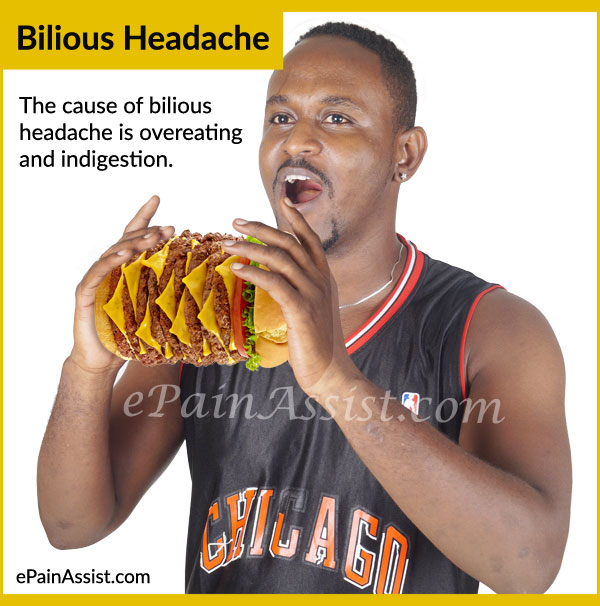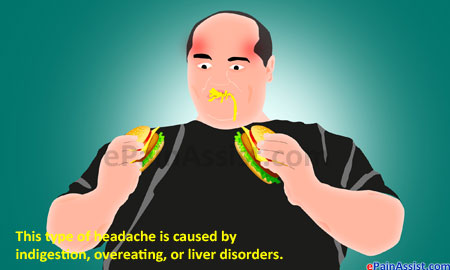Bilious headache is a headache, which a person experiences after overeating or consuming heavy meals leading to indigestion and headache. Patients with liver disorders may also suffer from bilious headache. Bilious headache is felt as a dull pain located in the forehead region with throbbing pain in the temples. This type of headache is caused by indigestion, overeating, or liver disorders.

It is named bilious headache after the secretion of bile, which is a green colored fluid and is secreted by liver. Bile helps with the digestion of fats. There is also a chance that the patient could be suffering from malabsorption syndrome where there is a failure to digest non vegetarian, spicy, greasy food. Patient also experiences acidity.
Causes of Bilious Headache
The cause of bilious headache is overeating and indigestion. Individuals who don’t have their meals on proper time and do not follow a healthy diet are more prone to having these headaches. Individuals who consume oily, fatty, and junk food are at a higher risk for developing these headaches, as oily and fatty foods are difficult to digest and act as a burden on the digestive system.
Individuals who commonly suffer from bilious headaches are also prone to bilious dyspepsia.
Signs, Symptoms and Associated Symptoms of Bilious Headache
- Pain is throbbing and splitting in nature, felt in the temples.
- Patient feels heaviness in the head and neck region.
- Patient experiences abdominal discomfort and bloating.
- Patient also suffers from constipation.
- Patient may also experience regurgitation of bile from the mouth.
- Patient is often irritable and restless.
- Patient feels nauseous and often vomits huge amounts of undigested food followed by bile. After vomiting, patient feels relieved as the headache subsides.

Investigations for Bilious Headache
Diagnosis is made on the basis of past history and questioning the patient’s eating habits and going through the patient’s symptoms. There are no specific tests for diagnosing bilious headaches. The symptoms itself are a good indicator of whether the patient is suffering from bilious headaches or not.
Treatment for Bilious Headache
The aim of treatment is to provide relief from headaches and indigestion to the patient. Once the matter of indigestion is solved, then the headache automatically goes away on its own. Treatment comprises of:
- Applying alternately hot fermentations and tepid compresses to the head, over the stomach and bowels.
- Giving the patient hot drinks.
- Warm water enema helps in clearing the constipated bowels.
- Warm sitz baths and full baths also provide relief.
Preventative Measures for Bilious Headache
- Foods such as tea, coffee and different types of fats should be avoided.
- Tobacco and spirituous liquors should be strictly avoided, as they are thought to be the main culprits in causing this condition.
- It is very important to change your eating habits for the better. Small, frequent meals are best and can be digested easily and will give you energy all day long.
- Foods rich in fiber, such as fruits and vegetables, should form a large part of your diet.
- Don’t forget to exercise daily. It could be in any form, such as brisk walking from 10 to 15 minutes after meals or going jogging in the morning.
- Don’t forget to drink lots of water throughout the day.
